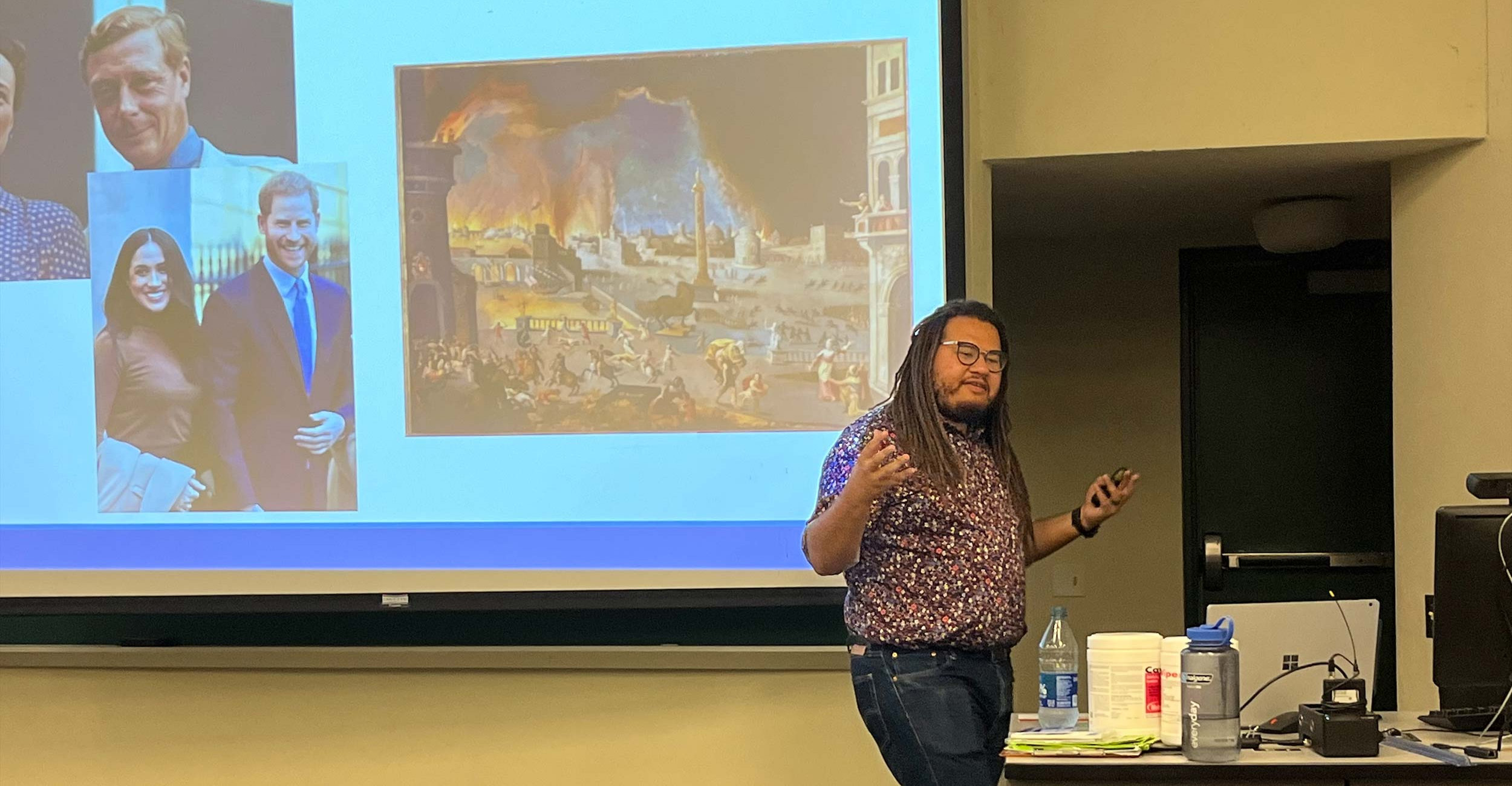
OCEAN Speaker Series: Guest psychology professor gives talk on human mate choice
Friday, September 23, 2022
Media Contact: Elizabeth Gosney | CAS Marketing and Communications Manager | 405-744-7497 | egosney@okstate.edu
On Sept. 15, Dr. Daniel Conroy-Beam — an evolutionary psychologist and University of California, Santa Barbara professor — presented research at OSU as part of the OCEAN Speaker Series.
Hosted by the Department of Psychology, the OCEAN Speaker Series provides opportunities for faculty, undergraduate and graduate students to gain insight on research in evolutionary social science. Conroy-Beam discussed psychology research into using computer models to understand how people find mates. He explained that it uses an evolutionary perspective on top of the computer perspective to infer how decisions and regulations are made in romantic relationships.
Conroy-Beam first went over mating rituals to provide a better understanding of human oddities in mating. Then, he transitioned into how the computer models or agent-based modeling comes into his study of human mate choice.
Conroy-Beam explained that agent-based modeling is a computer simulation that acts as a fake population or “agents.” These agents act as independent people who interact with other agents in order to find their potential long-term mate. The agents have pre-set decisions that determine how they act and interact.
“Agent-based modeling is critical to my research because human mating markets are so complex,” Conroy-Beam said. “They're too large and too dynamic to catch in the laboratory.”
Conroy-Beam and his team developed the agent-based technique of couple simulation in order to pinpoint how and why people choose their partners. It allows for the most realistic observation of the mating market without observing human subjects and gives researchers the opportunity to observe patterns people might use in their search for a mating partner.
In his talk, Conroy-Beam explained how his team created profiles based on real people and copied them in real computer based simulated mating markets. They ran these avatars through different simulations mimicking real life scenarios, then observed their actions. They wanted to find out what the avatar would do, but mostly they wanted to discover which scenario was the best at replicating the mating decisions of the real people they were based on.
“So far, our best models are able to both reconstruct around 40% of real world couples — which may not sound super impressive, but guessing would get you a less than 1% accuracy rate — and are able to identify happy, committed relationships,” Conroy-Beam said.
Conroy-Beam and his team have broadened the knowledge of human mate choice. Their research shows how human choice affects the mating process in general, or why people choose and strategize what they do when faced with complexities.
To find out more about OCEAN and the OCEAN Speaker Series, visit theocean.mystrikingly.com.
Story By: Allie Putman, CAS student intern | allie.putman@okstate.edu
